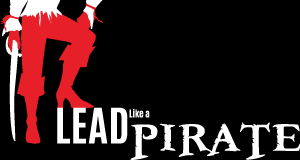#LeadLAP Challenge
It has been awhile since we have posted a #LeadLAP challenge, but I posted the blog below on my website yesterday, and it’s sparked a lot of conversation, so Beth and I decided to turn it into this week’s #LeadLAP Challenge… We hope you’ll join us!

Full disclosure before you read on… I know that what I’m about to say might rub some people the wrong way, but I hope you’ll read on and I’d love to hear your thoughts!
I don’t particularly like the phrase, I’m going to do “what’s best for kids”. I think we need to be really mindful when we throw it around in our profession. While I understand the positive intent of the phrase and I agree whole-heartedly that meeting the needs of students should absolutely be the primary focus of what we do in our schools and districts… I think tossing the “what’s best for kids” phrase around can be harmful to our school and district cultures. Here’s why:
- If I use the phrase “I’m going to do what’s best for kids”, it is incredibly easy for the person who I am talking to to reach the conclusion that I believe that they, in fact, do not have the best interest of students in mind. While I can acknowledge that there are times when people make decisions based solely on their own best interests, I actually think that in our profession it’s pretty rare. In my experience most educators I have worked with typically make decisions based on their belief that they are doing what’s best for kids.
- “I’m going to do what’s best for kids” has a finality to it that makes it hard for someone to respectfully disagree with me. It’s a “last word” phrase as opposed to a phrase that invites discussion and dialogue. After all, in our business, who can argue against doing what’s best for kids?
- Where does that argument stop? Let’s say that I believe we should have a 30 minute after school reading program for struggling readers because it’s “best for kids”. If 30 minutes is good, what about an hour… is that better? What about two hours? If a couple of hours after school in a reading program is good… wouldn’t a half day Saturday program every week be better? What about a full day? Maybe it would be best to add four weeks… six weeks… 12 weeks to the school year for all of our struggling readers.
- We don’t all have the same beliefs about “what’s best for kids”, and the research can be contradictory. I could make a case for that after school reading program being what’s “best” while one of my teachers could easily make the case that it’s “best” to have small group reading interventions during the school day so that after school, kids have time to play sports, take music lessons, or to just play and be kids.
- What’s best for one kid isn’t always what’s best for another. Each child is unique in their gifts, their talents, their motivations, their quirks, their needs… A “one size fits all approach” to what’s best runs the risk of merely being average for all kids as opposed to what’s best for any one of them.
So… the challenge is this: let’s just presume that all of the educators we work with have the best interests of kids at heart. We may disagree from time to time on what those are, but not too many committed educators show up to work each day making decisions they think will be bad for kids, so why would we want to use a phrase that might convey that we are the only ones who know best?
As an educational leader, I really do want to do what’s best for kids, but presuming that only I know what’s best is a quick way to dissolve relationships, create mistrust and erode culture. Sometimes our ability to do what’s best for kids simply lies within our ability to inspire, influence and support the adults on our team.
This week’s challenge:
Pay close attention to the words and phrases you use when you are talking to, or with, your staff. If you are really daring, record a conversation or two or even the staff meeting or a PLC you are leading. Maybe even enlist the help of a trusted colleague to provide you with some feedback. Are their certain words and phrases you find yourself using often? Write them down and reflect:
- How and when am I using the phrases?
- Are the phrases I’m using being received in the way I intend them to be?
- Do the words have impact or are they becoming cliche?
- Are the words and phrases I’m using inviting dialogue or shutting it down?
- Are there alternative/more powerful ways to convey my message?
- Share some of your reflections with us in a blog of your own and/or in the #LeadLAP hashtag this week
Beth and I look forward to hearing your thoughts!
